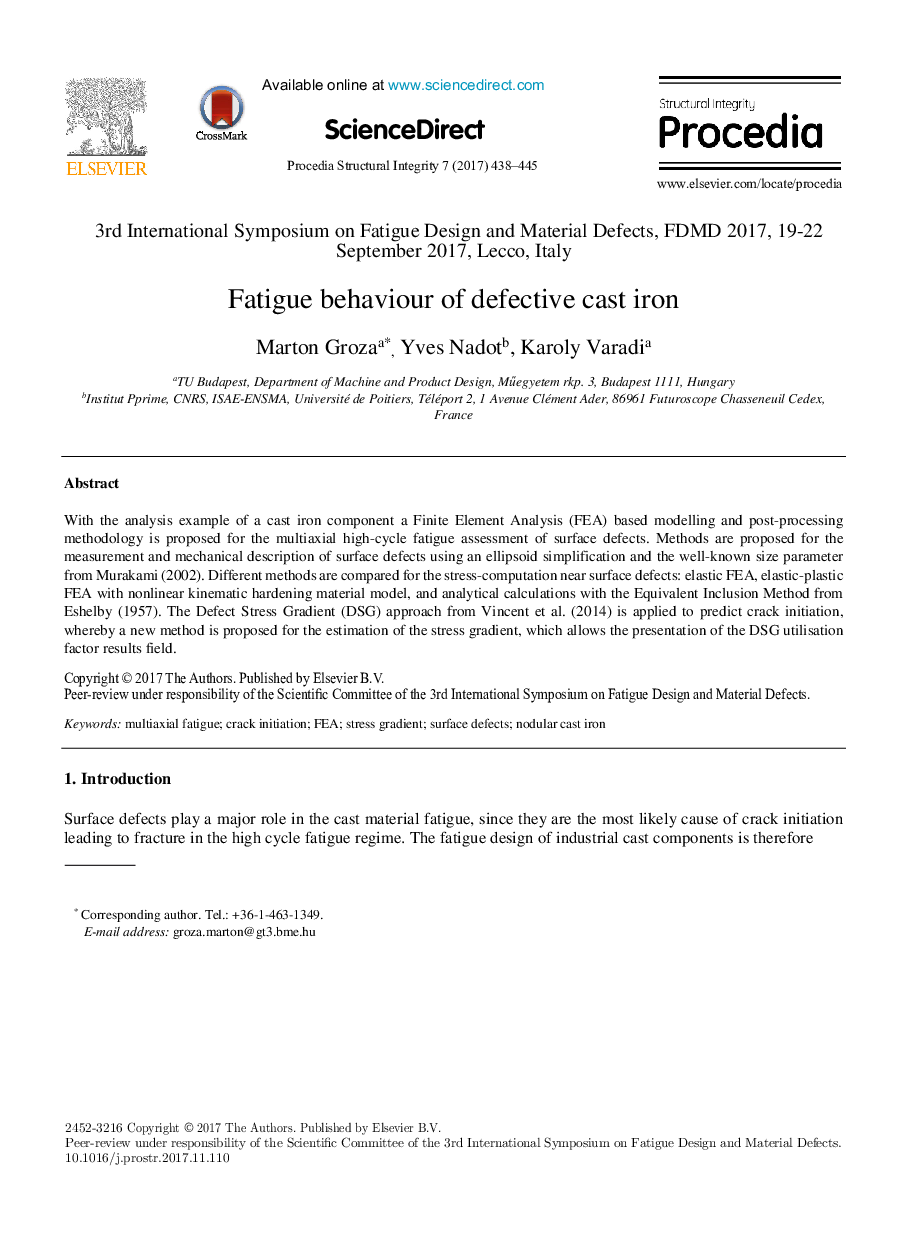| Article ID | Journal | Published Year | Pages | File Type |
|---|---|---|---|---|
| 7954981 | Procedia Structural Integrity | 2017 | 8 Pages |
Abstract
With the analysis example of a cast iron component a Finite Element Analysis (FEA) based modelling and post-processing methodology is proposed for the multiaxial high-cycle fatigue assessment of surface defects. Methods are proposed for the measurement and mechanical description of surface defects using an ellipsoid simplification and the well-known size parameter from Murakami (2002). Different methods are compared for the stress-computation near surface defects: elastic FEA, elastic-plastic FEA with nonlinear kinematic hardening material model, and analytical calculations with the Equivalent Inclusion Method from Eshelby (1957). The Defect Stress Gradient (DSG) approach from Vincent et al. (2014) is applied to predict crack initiation, whereby a new method is proposed for the estimation of the stress gradient, which allows the presentation of the DSG utilisation factor results field.
Related Topics
Physical Sciences and Engineering
Materials Science
Materials Chemistry
Authors
Marton Groza, Yves Nadot, Karoly Varadi,
